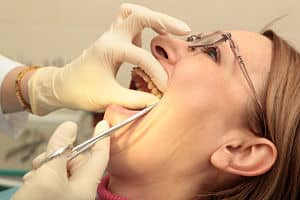 A new Italian study, published in The Angle Orthodontist, evaluated whether the debonding procedure leads to restitutio ad integrum on the enamel surface. The researchers looked at the presence of enamel within the bracket base remnants after debonding. They found that the objective of an atraumatic debonding has not yet been achieved and that in some cases the damage could be clinically relevant.
A new Italian study, published in The Angle Orthodontist, evaluated whether the debonding procedure leads to restitutio ad integrum on the enamel surface. The researchers looked at the presence of enamel within the bracket base remnants after debonding. They found that the objective of an atraumatic debonding has not yet been achieved and that in some cases the damage could be clinically relevant.
The study included 60 patients who completed orthodontic treatment with fixed appliances. A total of 1068 brackets were microphotographed. The brackets presenting some remnants on the base (n=818) were then selected and analyzed with ImageJ software to measure the remnant area. From this sample, the researchers selected a statistically significant sample (n=100) and observed those under a scanning electron microscope to check for the presence of enamel within the remnants. Energy dispersive x-ray spectrometry was also performed to obtain quantitative data.
The results showed statistically significant differences in the remnant percentage between arches for incisor and canine brackets (P<.0001 and P=.022, respectively). In addition, using morphologic analysis of the scanning electron micrographs, the bracket bases were categorized in 3 groups: group A, bases presenting a thin enamel coat (83%); group B, bases showing sizable enamel fragments (7%); group C, bases with no morphologic evidence of enamel presence (10%). Calcium presence was noted on all of the evaluated brackets under energy dispersive x-ray spectrometry. The researchers noted no significant difference in the Ca/Si ratio between group A (16.21%) and group B (18.77%), where as the Ca/Si ratio in group C (5.40%) was significantly lower than that of the other groups (P<.323 and P=.0001, respectively).







